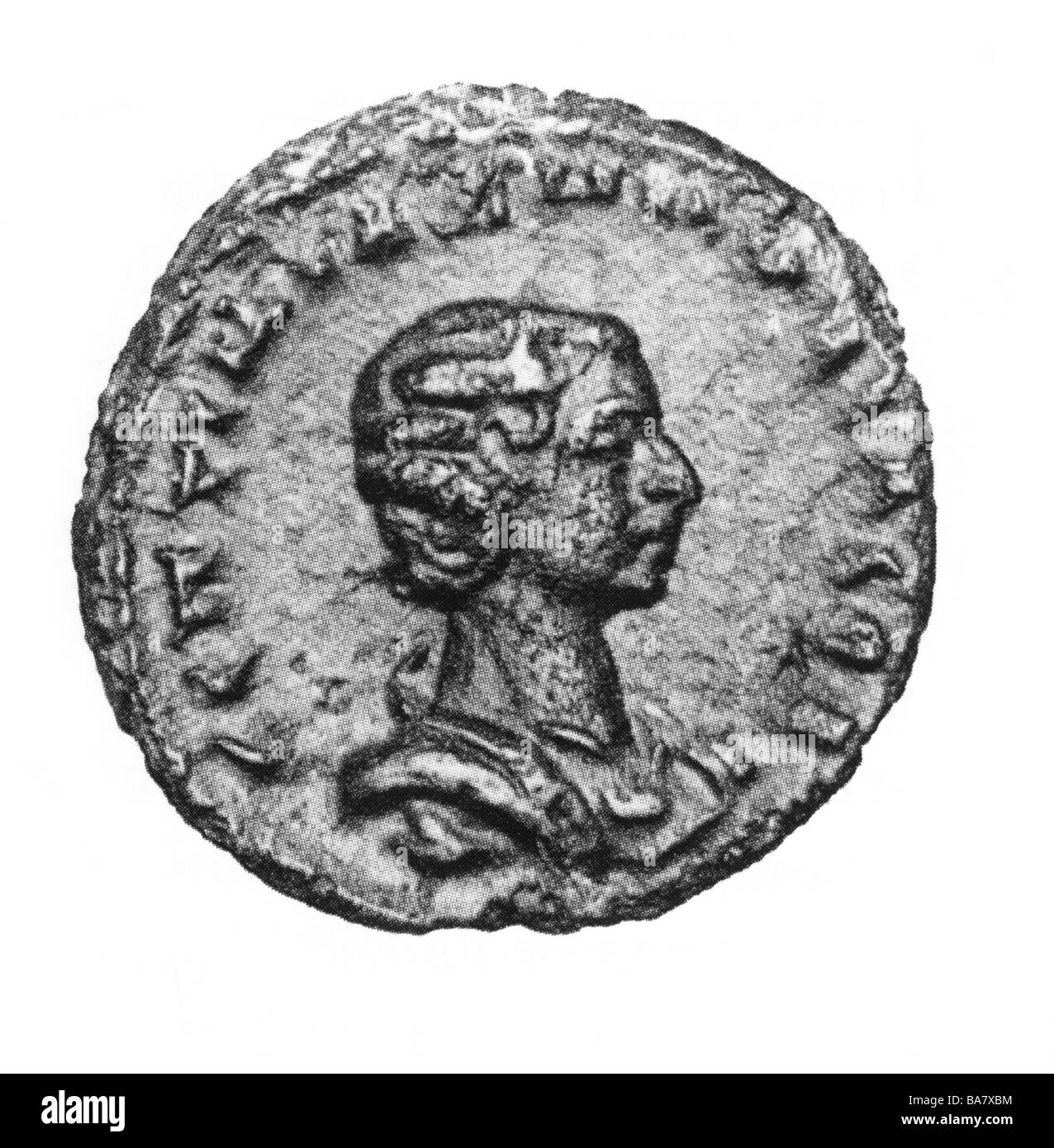Zenobia’s Rise: From Palmyrene Nobility to Empress
Zenobia, whose name resonates through history, evokes the image of a powerful queen, skilled warrior, and defiant leader who challenged the might of Rome. Born Bat-Zabbai, “daughter of Zabbai,” likely around 240 CE in Palmyra, Syria, her origins remain partially shrouded in mystery. While her exact lineage is debated, she likely hailed from a prominent family, possessing the Roman gentilicium “Septimia,” suggesting a connection to Roman society. Palmyra, her birthplace, thrived as a vital oasis city at the crossroads of trade and culture in the ancient world, its unique blend of Arab and Aramean cultures undoubtedly shaping her worldview. This strategic location along the Silk Road likely played a significant role in fostering her ambition and understanding of global politics.
Her ascent began with her marriage to Septimius Odaenathus, a powerful Palmyrene nobleman and Roman ally. Odaenathus, who became king in 260 CE, further solidified Palmyra’s position by defeating the Sasanian Empire and stabilizing the Roman East, earning him considerable influence within the Roman Empire. Some historians suggest Zenobia wasn’t merely a passive wife, but actively participated in her husband’s political and military endeavors, gaining valuable experience in leadership and strategy. After Odaenathus’s assassination in 267 CE, potentially orchestrated by rivals, Zenobia became regent for her underage son, Vaballathus, effectively taking control of Palmyra. This pivotal moment marks her transformation into Zenobia, the Warrior Queen.
Forging an Empire: Zenobia’s Campaigns and Governance
Rather than maintaining the status quo, Zenobia embarked on an ambitious expansionist policy. Initially, she probably sought agreements with Roman emperors, but ultimately chose a path of conquest. Her armies, likely comprising Palmyrene forces and allied contingents, swept through the region, conquering Egypt in 269 CE and incorporating parts of Anatolia into her burgeoning empire. This audacious expansion directly challenged Roman dominance in the East. She didn’t just conquer; she governed. Evidence suggests she was a skilled administrator, ensuring the prosperity and stability of her newly acquired territories. This period witnessed the declaration of Vaballathus as emperor and Zenobia as “Augusta,” Empress of the East, a bold proclamation of her imperial authority. Coins minted during her reign, bearing her image and her son’s, further solidify this claim, showcasing her deliberate cultivation of a powerful public image.
Clash of Empires: Zenobia vs. Rome
Zenobia’s growing power inevitably led to a clash with Rome. Emperor Aurelian, a formidable military leader determined to restore Roman authority after the tumultuous Crisis of the Third Century, viewed Zenobia’s empire as a direct threat. He launched a campaign in 272 CE to reclaim the eastern provinces, setting the stage for a confrontation between two powerful figures. The ensuing battles demonstrated the strength and determination of both sides, with Zenobia’s forces initially offering strong resistance. However, the superior might and logistical capabilities of the Roman legions eventually prevailed. The siege of Palmyra in 272 CE marked the end of Zenobia’s reign, and she was captured, her empire reabsorbed into Roman control. You can explore the fascinating history behind symbols of the past such as the serapis flag and the serpent mound photos.
Zenobia’s Fate and Enduring Legacy
The details of Zenobia’s fate remain subject to debate. Some accounts depict her being paraded through the streets of Rome in Aurelian’s triumph, a symbol of his victory. Other accounts suggest a less dramatic end, with her possibly living in exile near Rome, perhaps even marrying a Roman senator. The lack of definitive evidence fuels ongoing research and speculation. Regardless of her ultimate fate, Zenobia’s legacy as a symbol of resistance against overwhelming odds, particularly as a woman in a male-dominated world, continues to inspire. She is remembered not only for her military prowess but also as a patron of the arts and culture, fostering Palmyra as a vibrant center of learning and intellectual exchange. Her story serves as a compelling reminder of individual courage and determination in the face of imperial power.
Zenobia and Cleopatra: Separated by History, United by Legend
Zenobia’s story frequently invites comparisons to another iconic female ruler of the ancient world: Cleopatra VII of Egypt. The Historia Augusta records Zenobia’s claim of descent from Cleopatra, a lineage that, if true, would have significantly bolstered her legitimacy and public image, connecting her to a legacy of powerful female rulers. However, no other historical sources corroborate this claim. Furthermore, a significant chronological gap of approximately three centuries separates the two queens, making a direct familial link highly improbable. It is more likely that Zenobia strategically invoked Cleopatra’s name to enhance her own authority, associating herself with a figure renowned for her intelligence, political acumen, and resistance against Roman dominance. This association, whether based on fact or political strategy, contributes to the enduring fascination surrounding Zenobia’s life and reign.
Ongoing Research and Unanswered Questions
While historical accounts provide a framework for understanding Zenobia’s life, many questions remain unanswered. Ongoing research continues to explore various aspects of her reign, including the cultural and religious landscape of Palmyra under her rule, the economic factors driving her expansionist policies, and the precise impact of the Crisis of the Third Century on her decisions. Further investigation into her relationship with various Roman emperors and deeper analysis of archaeological evidence from Palmyra could potentially reveal new insights into her motivations, the complexities of her rule, and the true extent of her remarkable impact on the ancient world. As new discoveries emerge, our understanding of Zenobia’s story continues to evolve, ensuring that she remains a captivating figure for historians and enthusiasts alike.
- China II Review: Delicious Food & Speedy Service - April 17, 2025
- Understand Virginia’s Flag: History & Debate - April 17, 2025
- Explore Long Island’s Map: Unique Regions & Insights - April 17, 2025

















2 thoughts on “Zenobia: The Warrior Queen of Palmyra and Her Defiance of Rome”
Comments are closed.